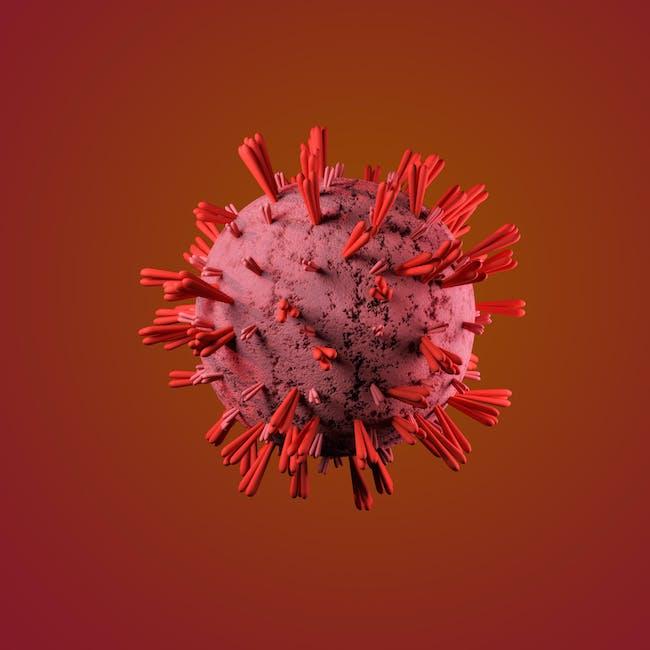
Understanding Myelodysplastic Anemia: Causes, Symptoms, and Treatment Options
Myelodysplastic anemia is a group of disorders that affect the bone marrow and blood. It is characterized by the ineffective production of blood cells, leading to a decrease in the number of healthy red blood cells, white blood cells, and platelets. In this article, we will explore the causes, symptoms, and treatment options for myelodysplastic anemia.
Causes of Myelodysplastic Anemia
Myelodysplastic anemia can be caused by a variety of factors, including genetic mutations, exposure to certain chemicals or radiation, and aging. Some people may develop the condition without any known cause, while in others, there may be a clear risk factor.
Genetic mutations are a common cause of myelodysplastic anemia. These mutations can affect the bone marrow’s ability to produce healthy blood cells, leading to a buildup of abnormal cells. In some cases, these mutations may be inherited, while in others, they may occur spontaneously.
Exposure to certain chemicals, such as benzene, or radiation, such as from cancer treatments, can also increase the risk of developing myelodysplastic anemia. These substances can damage the bone marrow and disrupt the production of blood cells, leading to the development of the disorder.
Age is another important factor in the development of myelodysplastic anemia. The risk of developing the disorder increases with age, with most cases occurring in people over the age of 60. As we age, our bone marrow may become less efficient at producing healthy blood cells, increasing the risk of developing myelodysplastic anemia.
Symptoms of Myelodysplastic Anemia
The symptoms of myelodysplastic anemia can vary depending on the severity of the condition and which types of blood cells are affected. Common symptoms may include:
– Fatigue and weakness
– Shortness of breath
– Pale skin
– Easy bruising and bleeding
– Frequent infections
– Enlarged liver or spleen
– Petechiae (small red spots under the skin)
These symptoms occur because the body is not getting enough healthy blood cells, leading to anemia, a weakened immune system, and an increased risk of bleeding and bruising. In some cases, people with myelodysplastic anemia may not experience any symptoms, and the condition may only be detected during a routine blood test.
Diagnosis and Treatment Options
Myelodysplastic anemia is typically diagnosed through a combination of blood tests, bone marrow biopsies, and genetic testing. Blood tests can reveal low levels of healthy blood cells, while a bone marrow biopsy can determine the number and appearance of abnormal cells in the bone marrow.
Once myelodysplastic anemia has been diagnosed, the goal of treatment is to relieve symptoms, prevent complications, and improve overall quality of life. There are several treatment options available, depending on the severity of the condition and the specific types of blood cells affected.
One common treatment option for myelodysplastic anemia is supportive care, which may include blood transfusions to increase the levels of healthy red blood cells and platelets, as well as medications to help the bone marrow produce more blood cells. Supportive care can help relieve symptoms and improve the overall quality of life for people with myelodysplastic anemia.
In some cases, stem cell transplantation may be recommended as a treatment for myelodysplastic anemia. This procedure involves replacing the damaged bone marrow with healthy stem cells from a donor, which can help restore the production of healthy blood cells and alleviate symptoms of the disorder.
Chemotherapy and other medications may also be used to treat myelodysplastic anemia, particularly in cases where the condition is more severe or has a higher risk of progressing to acute myeloid leukemia, a type of cancer affecting the blood and bone marrow.
Prognosis and Future Research
The prognosis for people with myelodysplastic anemia can vary depending on the specific types of blood cells affected, the severity of the condition, and the effectiveness of treatment. Some people may experience only mild symptoms and can lead normal lives with appropriate management, while others may require more intensive treatment and ongoing care.
Research into the causes and treatment of myelodysplastic anemia is ongoing, with new developments in genetics, stem cell research, and targeted therapies offering hope for improved outcomes for people with the condition. By understanding the underlying causes of myelodysplastic anemia and developing more targeted treatment options, researchers hope to improve the prognosis and quality of life for people affected by this disorder.
In conclusion, myelodysplastic anemia is a complex disorder that affects the bone marrow and blood, leading to a decrease in the production of healthy blood cells. Genetic mutations, exposure to certain chemicals or radiation, and aging are all risk factors for developing myelodysplastic anemia. The symptoms of the condition can include fatigue, weakness, and an increased risk of infections and bleeding. Treatment options may include supportive care, stem cell transplantation, and chemotherapy, depending on the severity of the condition. Ongoing research is focused on improving the understanding and treatment of myelodysplastic anemia, offering hope for improved outcomes for people affected by the disorder.












